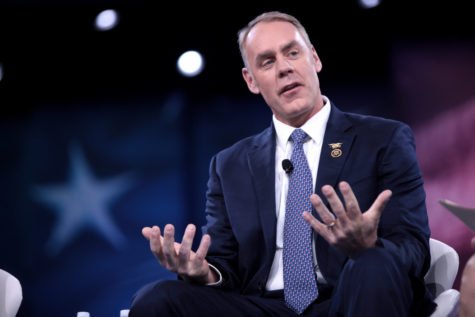By Timothy BolgerEx-U.S. Rep. Ryan Zinke (R-Montana) was recently named Secretary of Interior, putting him in charge of the National Park Service (NPS) and raising questions about what his tenure means for Fire Island National Seashore (FINS).The GOP-led U.S. Senate voted by a margin of 68-31 on March 1 to confirm the nomination of the former Navy SEAL commander, ex-Montana state senator and one-term congressman. But environmentalists and the Democratic minority expressed concerns about his support for easing restrictions on drilling for fossil fuels on federally owned land – questioning his independence from his new boss, President Donald Trump.“Climate is changing,” Zinke said when U.S. Sen. Bernie Sanders (I-Vermont) asked Zinke if he agrees with Trump’s assertion that global warming is a hoax. “Man has had an influence. I think where there’s debate is what that influence is, what we can do about it.”Besides overseeing NPS – of which FINS is one of more than 400 units – Zinke also oversees nine other agencies under the Department of Interior umbrella, including the U.S. Fish and Wildlife Service, U.S. Geological Survey and Bureau of Ocean Energy Management, which also have sway over Fire Island’s future. He takes over the Interior just as a wind farm was proposed for off our coast, and while a federal-funded Sandy reconstruction project, most notably a massive beach renourishment project, is still ongoing.Zinke is the 52nd Secretary of Interior, succeeding Sally Jewell, who was the second secretary appointed to the post by the Obama administration. His ascension comes two years after FINS celebrated its 50th anniversary, and the year following the NPS centennial. It also comes as the agency is reeling from a sexual harassment scandal within its ranks and is facing a $12 billion backlog in deferred park maintenance that has left some national parks infrastructure crumbling – issues he has vowed to tackle.FINS Superintendent Chris Soller said that he was optimistic about Zinke, citing the secretary’s affinity for the 26th president, a hometown hero who greatly expanded NPS:”Secretary Zinke has committed to ensuring our public lands are managed and preserved in a way that benefits all Americans for generations to come,” Soller said. “Fire Island National Seashore looks forward to working with him in those efforts. We share his deep admiration for the conservation ethic of Theodore Roosevelt, who built his home here on Long Island.”Camille Guigliano, co-chair of the Village of Ocean Beach Environmental Commission, was less optimistic.“Undoing the decisions, agreements and legislative acts of the previous administration in the next four years will have negative impacts and consequences on our planet for decades to come,” she said. “So, as an environmentalist, I am very concerned about his mandate, his priorities, and the impact that his actions will have on Fire Island, as well as all barrier islands like Fire Island. And I find it very disturbing that he is part of a larger administration that seems to show a lack of respect for nature and the environment in general.”Critics of how Zinke’s policies may trickle down to the beach might find hope in how rogue NPS rangers were among the first to ruffle feathers in the new administration by posting information challenging the president on social media. Among the first calls Trump made after being sworn in was to Mike Reynolds, a former FINS superintendent who now serves as acting NPS director, to complain about photos tweeted from NPS accounts showing how small the crowd size was on the National Mall during Trump’s Jan. 20 inauguration compared to Obama’s in 2009, according to recently disclosed emails.Meanwhile, on the local level, it appears so far that change on Fire Island is keeping at its usual pace – one slowly rolling ocean wave and wind-blown grain of sand at a time.




























